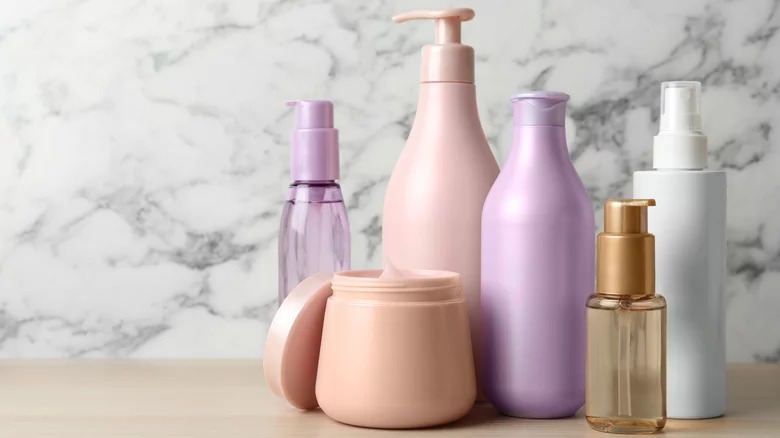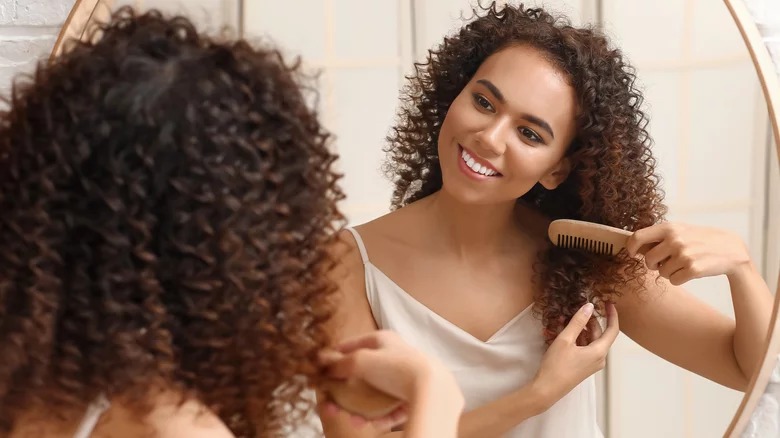
Bringing your natural curls back to life after being damaged is not impossible. Here’s why
Let’s face it: our hair is susceptible to a lot of damage, especially when we go through certain treatments or apply heat on a regular basis. If you’re lucky enough to have lush, natural curls, you might long for those pre-damage days. Whether you had a lightening mishap or a heat treatment gone wrong, your natural curls can still be brought back to life. First, it helps to understand why curly hair is so fragile.
As Prevention explains, curly hair is notorious for being drier than other types, as well as highly susceptible to breakage. For this reason, it can be challenging to administer on a regular basis. Once the damage is done, you may be even less motivated to style it.
There are many reasons why your curly locks may have been damaged. For example, product build-up can prevent your hair from absorbing moisture, according to NaturallyCurly. If you don’t regularly deep condition your hair, you can leave it susceptible to frizz, dryness and breakage. Permanent dye and bleaching can also cause serious damage to your curls. Wearing your hair in a protective style, such as cornrows, for an extended period of time can prevent it from naturally breathing and shedding. Here’s what you need to know about bringing your natural curls back to life after damage.
This article originally appeared on glam.com
How to bring your curls back to life

The first step to restoring your natural curls after they’ve been put through the twister is to cut back on your shampooing, according to Treatwell. Shampoo is notorious for stripping hair of its natural oils, and curly hair in particular needs as much moisture as possible. Opt for a simple rinse while in the shower if your hair feels dirty, or use a light conditioner.
After that, avoid heat styling altogether until you fully rehabilitate your natural curls. Heat can potentially cause permanent damage to curly hair by changing its structure. Furthermore, it causes problems, such as frizz and brittleness, which can be a curly-haired woman’s worst enemies.
Finally, Curlfit recommends investing in the right products for your hair type and using them regularly for recovery. For example, using a protein treatment weekly can help strengthen your hair, especially if you suffer from damage due to a process like bleaching. Adding a restorative cream or hair oil to your routine can also be beneficial, especially since curly hair needs as much moisture as possible. As you retrain your curls, don’t forget to avoid tight hairstyles that pull on your locks. Styles, such as braids, can be too much for fragile hair and even result in hair loss. Although you may cringe at the thought of being seen in public during your curl restoration process, the end result will be worth it.
Preventing future damage to your curls

Once you’ve restored your curls, you can avoid future damage by taking preventative measures, and some of this will start with changing your hair care routine. Healthline highlights the importance of incorporating curly hair-specific products into the mix. While browsing the hair care aisle at the store, look for shampoos and conditioners that contain ingredients such as aloe vera, keratin and shea butter. All of these can help your curls retain moisture.
Another product to add to your arsenal is a pre-shampoo treatment, which can be especially beneficial if you have coarse curls. Coarse hair generally tends to lose moisture more quickly. By using a pre-shampoo treatment, you can protect your locks from all natural oils that may be removed during your wash. Just remember to give it at least 30 minutes to work its magic before rinsing, according to Healthline.
Finally, consider changing the hair brush you use. A high-quality brush can help your natural oils spread evenly from root to tip. Women’s Wear Daily recommends boar bristles and paddle brushes for styling this hair type. After showering, use a comb to detangle or a wet brush with flexible bristles to minimize drag. Alternatively, you can skip brushing altogether and let your natural curls flow freely. At the end of the day, the goal should be to rock your curls confidently—no hair damage necessary.